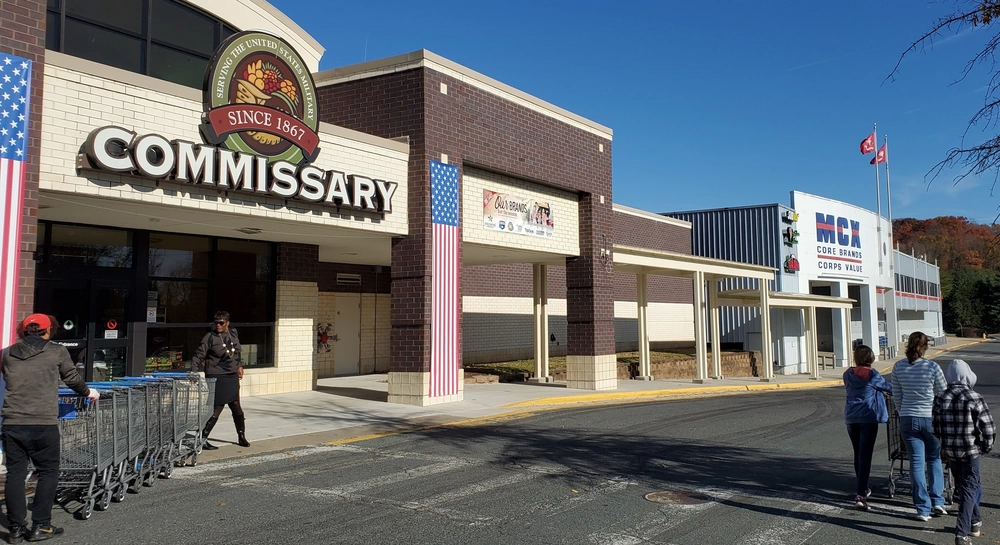VA Temporary Residence Adaptation (TRA) Grant for Disabled Veterans

The Temporary Residence Adaptation grant is a special benefit provided by the Department of Veterans Affairs. It is designed for veterans who have severe service-connected disabilities and are living temporarily in a home owned by a family member.
The grant provides funds to make necessary accessibility modifications to that family member’s home, ensuring the veteran can live safely and with a greater degree of independence during a transitional period while they are planning for a permanent housing solution. It serves as a bridge, making a temporary living situation safe and functional.
>>Never miss a benefits update. Subscribe to the MyMilitaryBenefits Newsletter today.
How does a veteran become eligible for a TRA grant?
Eligibility for the TRA grant is not standalone; it is entirely dependent on a veteran first being found eligible for one of the VA’s primary housing adaptation grants. A veteran must apply for and be officially approved for either the Specially Adapted Housing (SAH) grant or the Special Home Adaptation (SHA) grant.
The TRA grant is an additional benefit that can be accessed only after this primary eligibility has been established. The first step for any veteran interested in this grant is to apply for the main SAH or SHA program.
What does the VA consider a “temporary residence” for this grant?
A temporary residence must be a private home owned by a member of the veteran’s family to qualify for a TRA grant.
This can include a parent, spouse, child, sibling, or in-law. The crucial condition is that the veteran cannot be the owner or co-owner of the property, nor can their name be on the title or deed.
The grant is specifically intended to adapt a home the veteran does not own but is residing in temporarily while recovering or arranging for a permanent home.
What does it mean to be “medically feasible” to use a TRA Grant?
If a veteran was not living independently full time before adaptations are made but was residing in a medical facility, the VA requires a doctor’s letter explaining that living in the adapted home is a realistic option based on the veteran’s condition.
According to VA.gov, “the Veteran’s physician must provide a letter indicating that it will be medically feasible for the Veteran to reside in the home after adaptations have been made.”
What types of home modifications can be funded with a TRA grant?
The grant covers medically necessary adaptations to address the veteran’s specific service-connected disability. The funds are not for cosmetic improvements. They cannot be used for routine home maintenance.
Permitted uses may include the installation of access ramps, widening of interior and exterior doorways, and modification of bathrooms to incorporate accessible features such as roll-in showers, grab bars, and modified sinks.
Other approved projects can include lowering kitchen countertops for wheelchair access or upgrading electrical systems to support essential medical equipment. A VA agent works with the veteran to identify the most appropriate adaptations for their needs.
How much money is available through the TRA grant, and are there usage limits?
The maximum grant amount is set by law and is adjusted annually to reflect construction costs. The amount a veteran can receive depends on the primary grant they are eligible for. This is a lifetime benefit that a veteran may use up to three times, but the total funds received cannot exceed the statutory maximum. Any amount used from the TRA grant is deducted from the total lifetime amount available under the veteran’s permanent SAH or SHA grant.
>>Never miss a benefits update. Subscribe to the MyMilitaryBenefits Newsletter today.
What is the process for applying for and receiving a TRA grant?
The process is a structured, multi-step journey. First, the veteran must apply for and be approved for a primary SAH or SHA grant using VA Form 26-4555. Once eligibility is confirmed, the veteran notifies the VA of their intent to use the TRA grant.
The VA then assigns a Specially Adapted Housing Agent to the case. This agent visits the family member’s home to assess the veteran’s needs and consult on the project. The veteran must then get detailed bids from qualified contractors and submit them to the VA for approval.
No construction work should begin before receiving written authorization from the VA. After the project is approved and the work is completed, the VA agent conducts a final inspection before releasing the grant funds to pay the contractor.
What are the qualifying disabilities for the main SAH and SHA grants?
The eligibility for these primary grants is tied to specific, severe service-connected disabilities. The Specially Adapted Housing (SAH) grant generally assists veterans with major mobility impairments, such as the loss or loss of use of both legs, blindness in both eyes combined with the loss of use of a leg, or certain severe burns.
The Special Home Adaptation (SHA) grant is for veterans with conditions such as the loss or loss of use of both hands, legal blindness in both eyes with a specific visual acuity, or certain severe respiratory injuries. The VA determines eligibility based on a thorough review of the veteran’s medical records.
>>Never miss a benefits update. Subscribe to the MyMilitaryBenefits Newsletter today.
About the author
Editor-in-Chief Joe Wallace is a 13-year veteran of the United States Air Force and a former reporter/editor for Air Force Television News and the Pentagon Channel. His freelance work includes contract work for Motorola, VALoans.com, and Credit Karma. He is co-founder of Dim Art House in Springfield, Illinois, and spends his non-writing time as an abstract painter, independent publisher, and occasional filmmaker.


